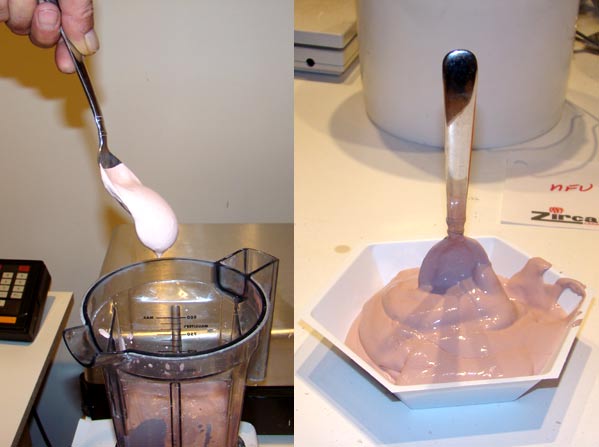
|
NFU Crystalline Glaze |
Zinc Silicate Crystalline Glaze Pottery A chronicle of my recent progress and a way for me to keep it straight in my head! |
Formula
51.8 Ferro 3110
24.5 Zinc Oxide
14.4 Silica
1.2 Kaolin
4 Rutile
3 Red Copper Oxide
4 CMC
| glaze with 4% CMC and thick shake consistency. |



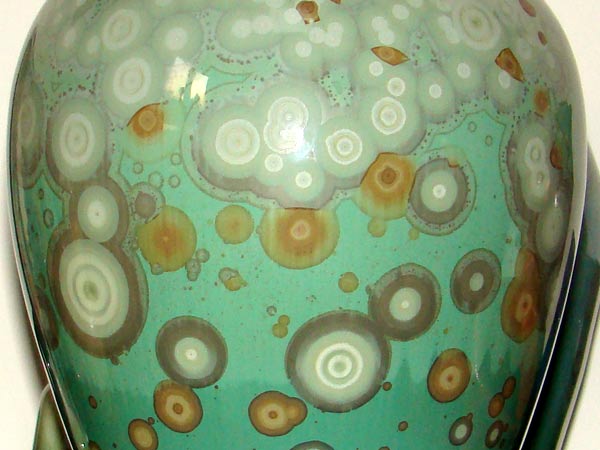

Glaze Thickness
I've been seeing many pieces where super thin glaze grew 5X+ faster at the lower temperatures than normal.
The pot below has broadly separated rings on its top which formed at temperatures below 1000°C. And on the shoulder where it is thicker, and the high temperature crystals (1050°C to 1080°C) grow quickly there is little separation between the low temperature bands.
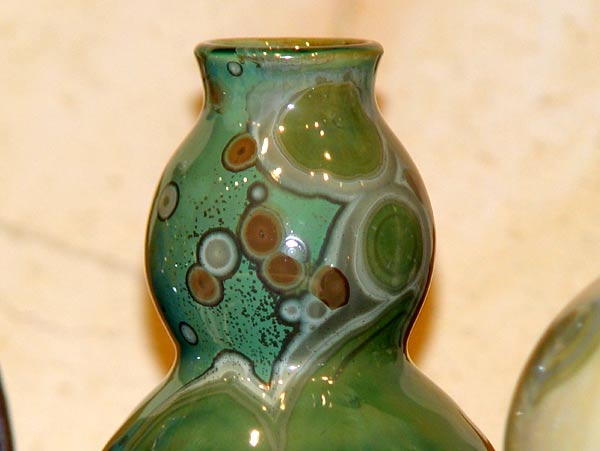
I used essentially the same schedule as April 22nd, holding down as low as 860°C. It seems the thickness of this glaze at these low temperatures has a major impact on whether these crystals will form and grow. The photo below shows the number of firings and glaze application rate. Notice the amount of glaze in the catchers.
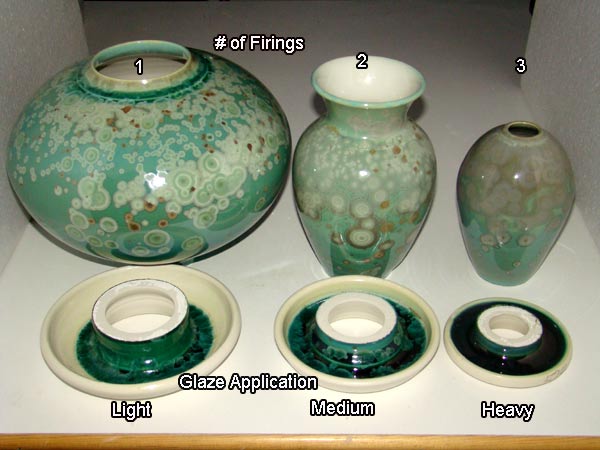
1, 2, 3, 4 and 5 coats of NFU. I think this test demonstrates that a thin glaze layer is key to the formation and growth of crystals at these low temperatures.
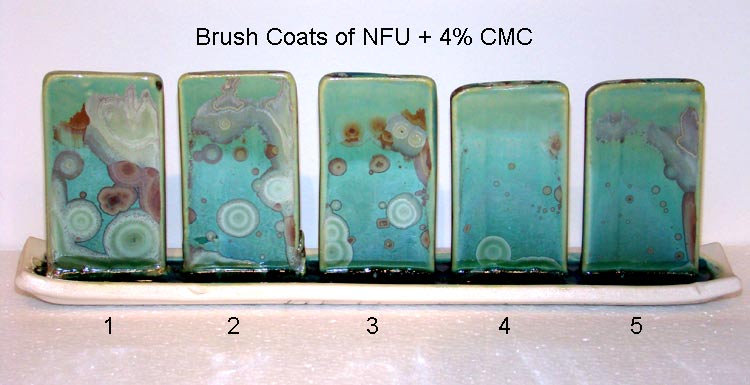
Too thick
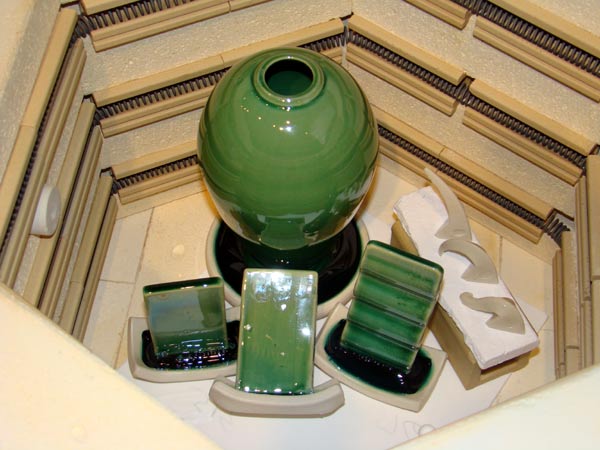
NFU except 1, 1 3/4, 2 1/2, 3 1/4 and 4% rutile. Things seem to be on target with the 4% rutile currently in NFU.
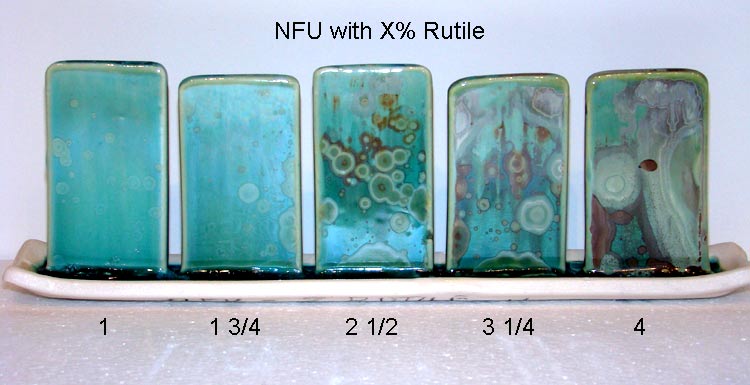
made with .30 g/sq.in. glaze loading
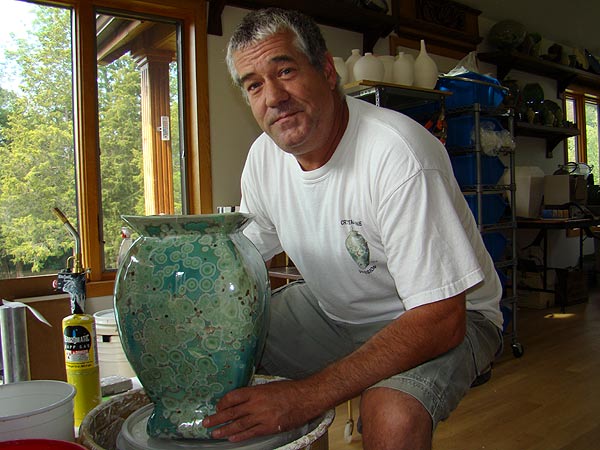
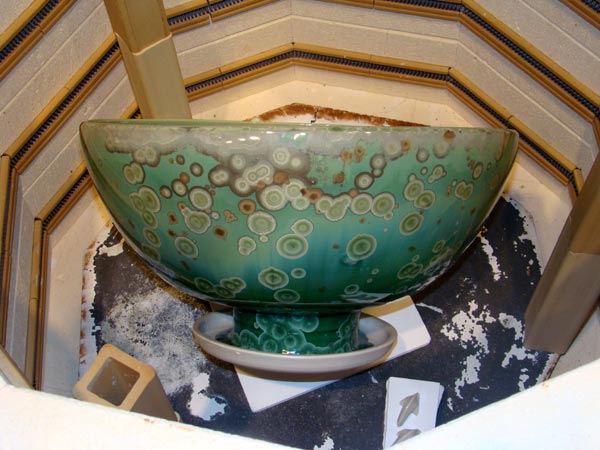
.25 -.30 g/sq.in. glaze on bottom, .6 - .7 g/sq.in. on top?
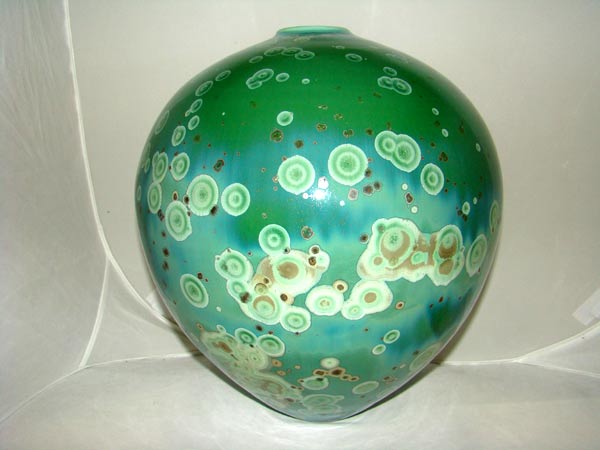
These were all controlled at 0.4 grams (dry) per square inch
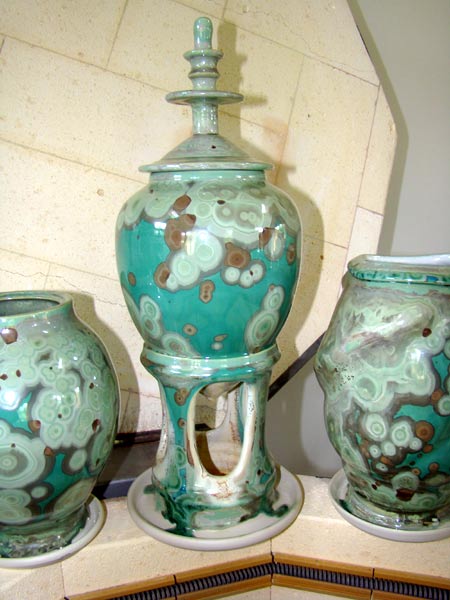
The background color and shape of the brown crystals change significantly with glaze thickness.
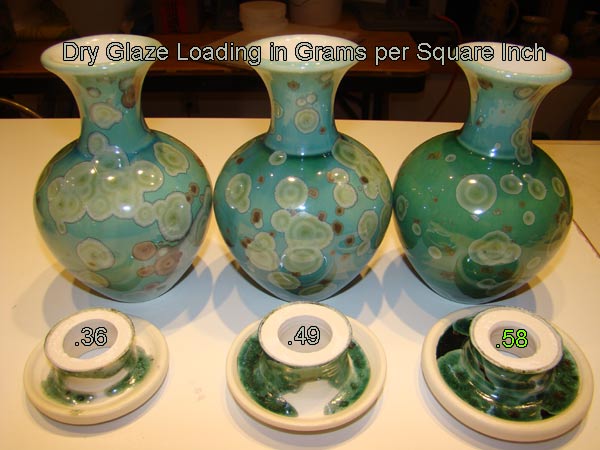
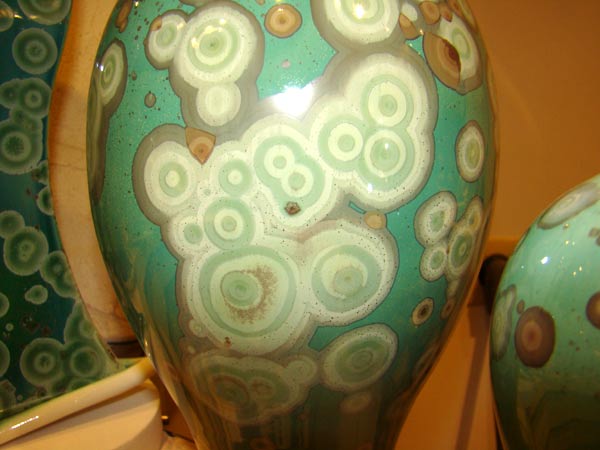
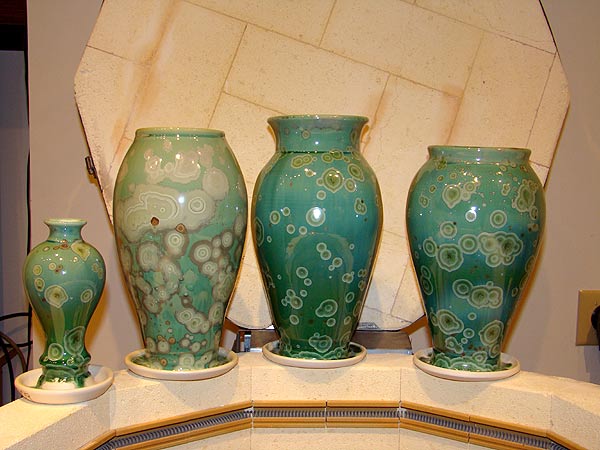
This piece has a glaze loading of ~ .40 g/sq.in.,
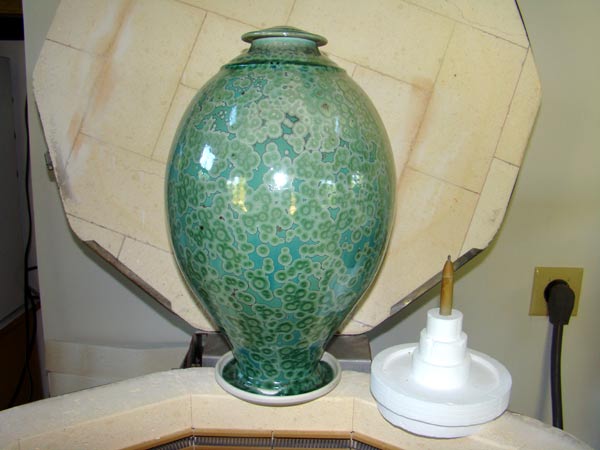
They had 0.51 and 0.46 g solids / sq. in. of surface
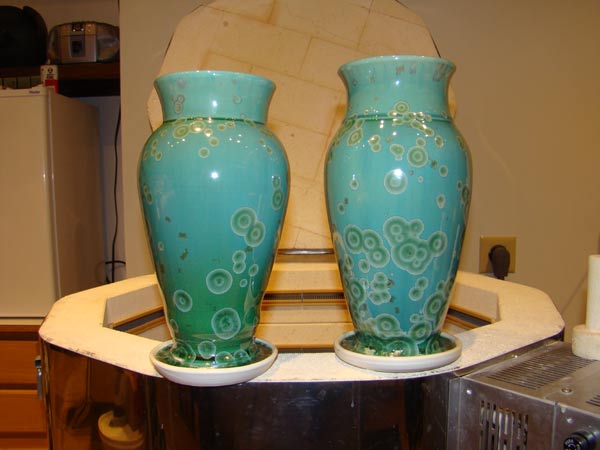
Phil Hamling
376 County Route 1
Warwick, NY, USA 10990